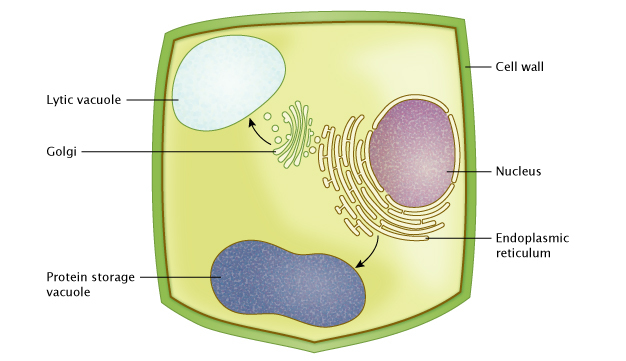MCQ ON VACUOLES class 11 for NEET | VACUOLES class 11 | MCQ VACUOLES with Answer | Check the below NCERT MCQ question for class 11 Biology based on the with Answers.

MCQ ON VACUOLES class 11 for NEET
MCQ on VACUOLES class 11 Biology with answers were prepared based on the latest pattern.We have provided class 11 Biology MCQs question with Answers to help students understand the concept very well.
MCQ ON VACUOLES is useful for NEET / CSIR / UGC / CBSE / ICSE / AIIMS / EXAM / AFMC EXAM / STATE LEVEL MEDICAL EXAM 2022-23 , 2023-24
INTRODUCTION:-
Vacuoles occur in most , if not all ,cells .They are small in animal cells.
Fungi and plants have large vacuoles.In plants , the vacuoles increase in size as the cell enlarge and a mature cell is almost fully occupied by a central vacuoles that is surrounded by a thin layer of cytoplasm wherein nucleus and other organelles are squeezed .
This is an adaption to quicken the exchange of materials between the cytoplasm and the surrounding environment.
The vacuoles are bubble – like sacs bounded by a single unit membrane called the tonoplast.They are filled with a fluid called cell sap.
The latter consists of free water and a variety of compounds in solution or suspension.
MCQ ON VACUOLES class 11 for NEET
1. Large vacuoles are found in
(a) fungi
(b) plant cell
(c) both a and b
(d) animal cells
Ans (c) both a and b
2. The vacuoles are bubble like sacs bounded by a single unit membrane called the
(a) tonoplast
(b) chloroplast
(c) ribosomes
(d) all the above
Ans. (a) tonoplast
3. Vacuoles are filled with a fluid called
(a) central vacuoles
(b) tonoplast
(c) cell sap
(d) all the above
Ans. (c) cell sap
4.The vacuoles have
(a) basic pH
(b) neutral pH
(c) acidic pH
(d) all the above
Ans.(c) acidic pH
5. In general the cell sap is ……to the surrounding medium .
(a) hypertonic
(b) hypotonic
(c) isotonic
(d) all the above
Ans.(a) hypertonic
6.The vacuoles of a mature plant cell is formed by enlargement and fusion of small vacuoles present in
(a) merismetic cells
(b) cell sap
(c) centrioles
(d) all the above
Ans.(a) merismetic cells
7. The tonoplast in vacuoles is differentially ……
(a) impermeable
(b) permeable
(c) semi-permeable
(d) All the above
Ans.(b) permeable
8. Which maintains turgor of plant cell ?
(a) vacuoles
(b) centriole
(c) ribosomes
(d) basal granules
Ans.(a) vacuoles
9. Vacuoles of the storage cells in seeds store
(a) Protein
(b) starch
(c) fats
(d) all the above
Ans. (a) protein
10. Which provides an aqueous environment for the accumulation and storage of water soluble compounds.
(a) basal granules
(b) centrioles
(c) mitochondria
(d) vacuoles
Ans. (d) vacuoles
11. Fresh water protozoan continuosly receive water by osmotic inflow from hypotonic environment .To get rid of excess water , they have special type of vacuoles that appear and disappear at intervals .These are called
(a) food vacuoles
(b) contractile vacuoles
(c) gas vacuoles
(d) distal centrioles
Ans.(b) contractile vacuoles
12. Food vacuoles occur in
(a) protozoan
(b) sponges
(c) coelenterates
(d) all the above
Ans . (d) all the above
13. Important site for formation of glycoprotein and glycolipid
(a) vacuoles
(b) golgi body
(c) mitochondria
(d) Golgi apparatus
Ans.(d) Golgi apparatus
14. The vacuoles is lined by a membrane called
(a) tonoplast
(b) jacket
(c) cytoplasm
(d) nucleus
Ans. (a) tonoplast
15. The function of contractile vacuoles
(a) excretion
(b) osmoregulation
(c) both a and b
(d) starch formation
Ans.(c) both a and b
ALSO READ:-
● YOU CAN WATCH BIOLOGY SIR Youtube channel
16. They may serve as a waste deposit bin in which unwanted materials , such as toxin .
(a) vacuoles
(b) centrosome
(c) subtubules
(d) profilaments
Ans.(a) vacuoles







Leave a Comment